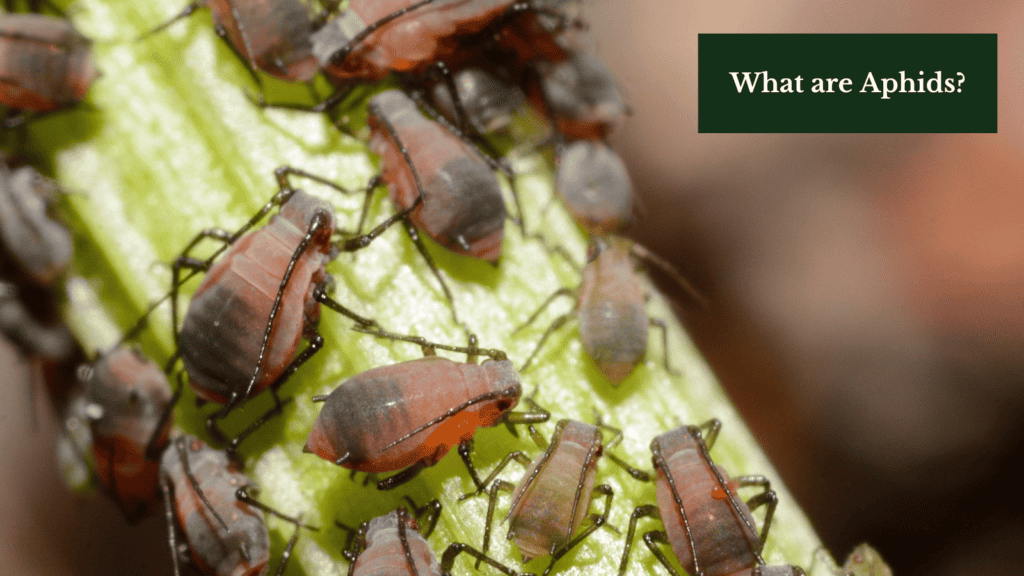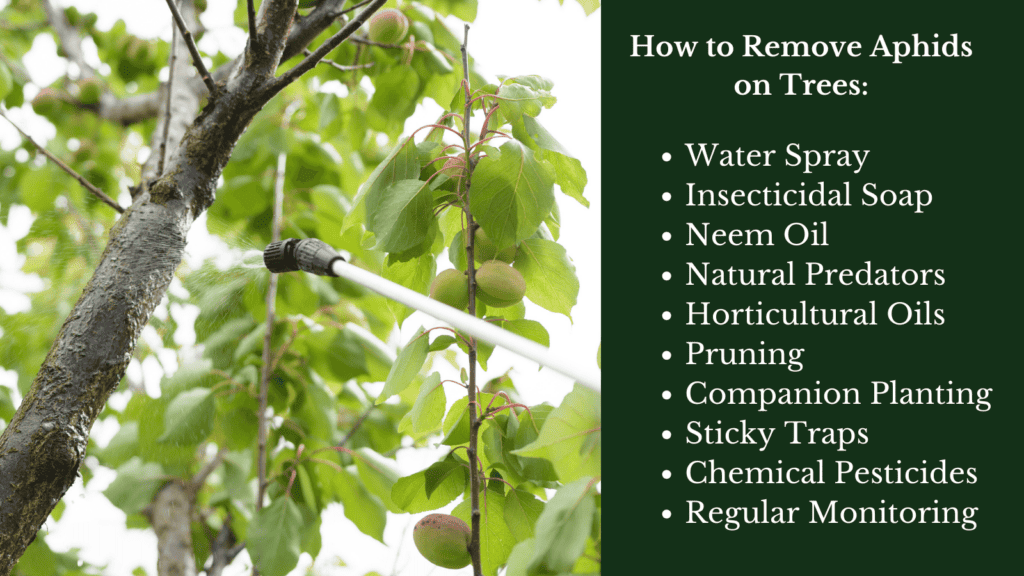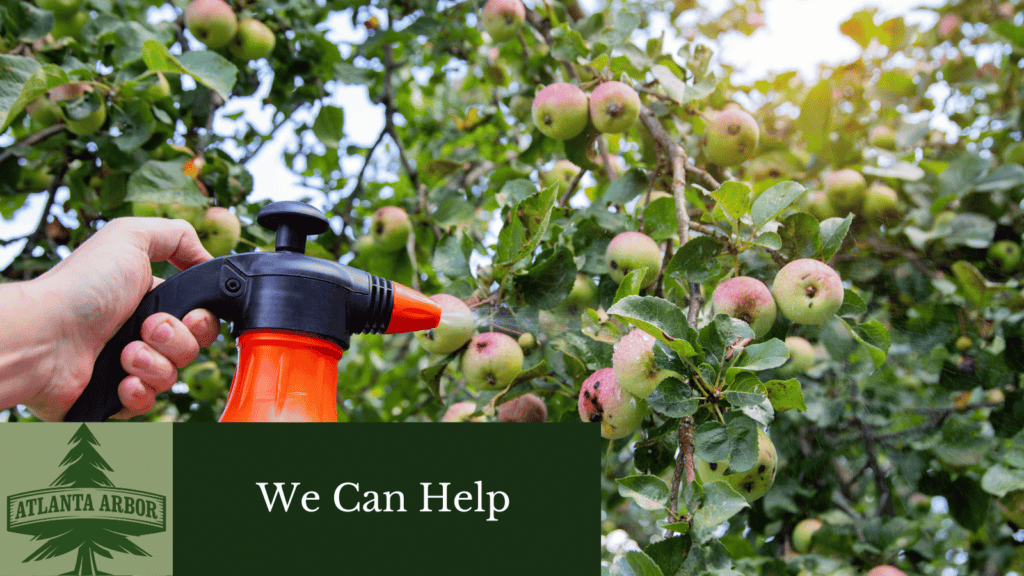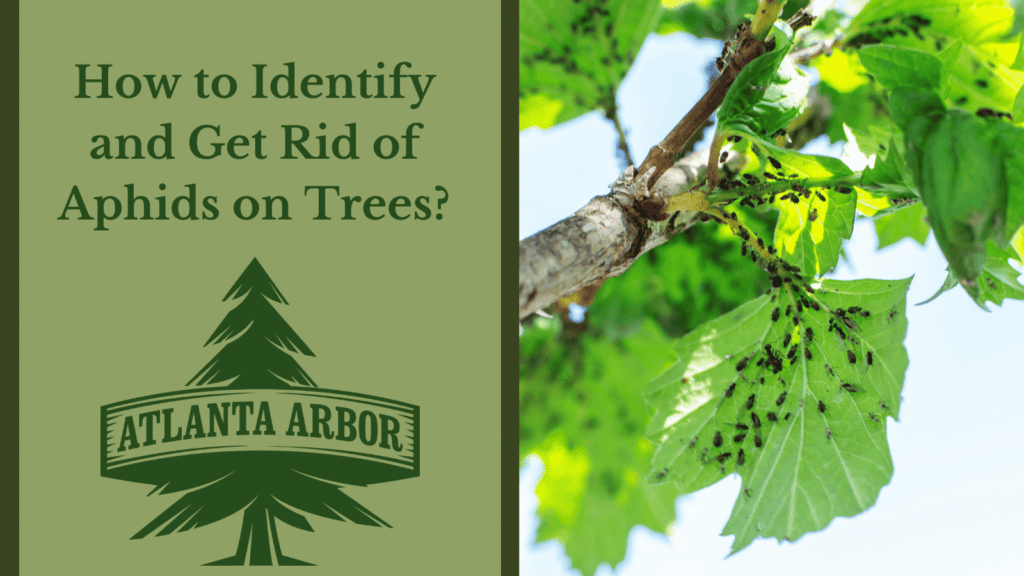Settings with vibrant landscapes, rich in diverse flora, offer a splendid showcase of nature’s beauty. Yet, with such lushness comes the inevitable presence of garden pests, among which aphids are particularly notorious. These small but harmful insects can be a significant problem for trees, impacting their health and vigor.
Understanding the plants aphids are attracted to, recognizing their presence, and knowing how to effectively combat them are crucial steps in maintaining the health and beauty of your trees and garden. Identifying and eradicating aphids will ensure your green spaces remain thriving and resilient.

What Are Aphids?
Aphids, belonging to the Hemiptera order, are small insects that feed on plant sap. Their colors can differ based on diet and species. Aphids are small in size but reproduce at a rapid rate, inflict considerable damage to plants and trees if not controlled.
What do Aphids Look Like?
Aphids are small, soft-bodied insects that can be found in a variety of colors, including green, black, brown, yellow, and sometimes red. They are typically quite small, often less than a quarter-inch in length. Aphids have pear-shaped bodies with long antennae and two short tubes, called cornicles, projecting rearward from the end of their abdomens. These cornicles are a distinctive feature and can help in identifying aphids. Some species have wings and others do not, depending on their life cycle stage and environmental conditions. Under magnification, their delicate, almost transparent bodies can be more easily observed.
What Plants are Affected by Aphids?
Crape Myrtles: Crape myrtles frequently fall prey to aphid infestations. These pests particularly affect the new growth of the plants, sucking the sap and weakening the young shoots. In the process, they excrete a sticky, sugary substance known as honeydew, which can attract other pests.
Roses: Rose bushes are another favorite target for aphids. These small insects feed on the tender parts of the roses, such as the buds and new leaves, causing them to become misshapen or distorted. The damage leads to stunted growth and affects the overall health and aesthetic of the rose bushes.
Fruit Trees: Certain aphid species are known to specifically infest fruit trees, with peach and apple trees being among the most commonly affected. The aphids feed on the sap of these trees, which results in curled and distorted leaves, weakened branches, and a reduction in fruit quality and quantity. This not only impacts the current season’s yield but also affects the tree’s long-term health and productivity.
What are Signs of Aphids on Trees?
Identifying aphids early on is key to effective control. Be on the lookout for these indicators:
- Clusters of Small Insects: Aphids typically congregate in dense groups, often found on the undersides of leaves or around areas of new growth on the tree.
- Leaf Changes: Trees infested with aphids show signs of leaf distortion, such as curling or yellowing, and the overall growth of the plant may appear stunted.
- Honeydew Secretion: A noticeable sign of aphid activity is the presence of honeydew. This sticky, sugary substance is excreted by aphids and attracts ants. Additionally, it leads to the development of sooty mold on the leaves and branches of the tree.
What Attracts Aphids?
Aphids are primarily attracted to plants by a few key factors. They have a strong preference for the tender, new growth of plants, as these young leaves and stems are softer and easier for them to penetrate and feed on. Additionally, plants that contain nutrient-rich sap are particularly appealing to aphids. This sap provides the essential nutrients that aphids need to survive and reproduce. Moreover, aphids favor warm and sheltered environments. They often gravitate towards areas of a plant that offer protection and a favorable microclimate, which aids in their feeding and breeding activities. These factors combined make certain plants especially susceptible to aphid infestations.

How to Remove Aphids on Trees: 10 Effective Ways
Removing aphids from trees is effectively managed through a combination of methods. Here are the effective ways to tackle aphid infestations:
- Water Spray: A strong jet of water can dislodge aphids from the tree. Regularly spraying the affected areas significantly reduces their population.
- Insecticidal Soap: Applying insecticidal soap directly to the infested areas effectively kills aphids without harming the tree. It’s safe for the environment and beneficial insects.
- Neem Oil: Neem oil is a natural pesticide that disrupts the life cycle of aphids. It’s effective and environmentally friendly.
- Natural Predators: Encouraging or introducing natural predators helps control aphid populations as these insects feed on aphids.
- Horticultural Oils: Dormant and summer oils smother aphids and are especially effective in controlling large infestations.
- Pruning: Removing heavily infested branches reduces aphid populations and prevents them from spreading.
- Companion Planting: Planting aphid-repelling plants like garlic, chives, or marigolds nearby naturally deters aphids.
- Sticky Traps: Placing sticky traps around the tree catches and reduces the number of adult aphids.
- Chemical Pesticides: In severe cases, chemical pesticides are necessary. However, they should be used as a last resort and applied according to safety guidelines.
- Regular Monitoring: Regularly inspecting the trees for signs of aphids and early intervention will prevent major infestations.
Combining several of these methods will often yield the best results in controlling aphid populations on trees.
What is the Best Spray for Aphids on Trees?
The most effective sprays for aphids on trees typically include insecticidal soaps, neem oil, and horticultural oils. Insecticidal soaps are specially formulated to target soft-bodied insects like aphids, effectively eliminating them without causing harm to the tree or beneficial insects, making them an environmentally friendly choice. Neem oil, a natural pesticide, disrupts the feeding and reproduction cycle of aphids and is favored in organic gardening for its safety and minimal environmental impact. Horticultural oils, such as dormant and summer oils, work by smothering aphids and are particularly effective in managing larger infestations.
What is the Best Natural Killer of Aphids?
The best natural killer of aphids is the introduction and encouragement of their natural predators in your garden or orchard. These beneficial insects include:
- Ladybugs (Lady Beetles): Ladybugs are voracious eaters of aphids, consuming large numbers in their lifetime. Releasing ladybugs in your garden significantly reduces aphid populations.
- Lacewings: Green lacewings are another effective predator. Their larvae are particularly good at feeding on aphids, making them a valuable ally in controlling aphid infestations.
- Hoverflies: The larvae of hoverflies are also known to consume aphids. Hoverflies are attracted to your garden by planting flowers like alyssum, which provide nectar for the adult flies.
- Parasitic Wasps: Certain species of parasitic wasps lay their eggs inside aphids. When the eggs hatch, the larvae consume the aphid from the inside, effectively controlling their population.
How to Prevent Aphids from Attacking Trees?
To prevent aphids from attacking trees, it’s essential to adopt a proactive approach in garden maintenance. Regularly inspecting trees for early signs of aphids will lead to prompt intervention. Encouraging a healthy ecosystem by attracting beneficial insects naturally keeps aphid populations in check. Keeping the trees well-watered and nourished ensures they are less vulnerable to infestations.
What Can I Put Around My Tree to Prevent Aphids?
Introducing companion plants that repel aphids, such as marigolds or garlic, around the trees is also effective. Additionally, avoiding over-fertilization, particularly with nitrogen-rich fertilizers, is crucial as they will promote lush growth which aphids find particularly attractive. Implementing these preventative measures creates an environment less conducive to aphid infestations, thereby protecting the trees’ health and vigor.

Ensuring the health and vitality of trees and plants involves a keen awareness of the threat posed by aphids. By being familiar with the preferred hosts of these pests, staying alert for signs of their activity, and employing effective control strategies, you can safeguard your precious greenery.
How often should I check my trees for aphids?
It’s recommended to inspect your trees for aphids regularly, especially during the growing season when they are most active, to catch any infestations early. Inspecting plants and trees regularly will lead to healthier trees before they are impacted by infestations.
What are the long-term strategies for preventing aphid infestations?
Promoting healthy tree growth through proper watering, mulching, and fertilization can make trees less susceptible to aphid infestations. Encouraging a diverse ecosystem to support natural predators can also help.
What should I do if natural remedies don’t get rid of the aphids?
If natural remedies are ineffective, you may need to consider using more potent chemical insecticides as a last resort. Always follow the product’s instructions and consider consulting a professional arborist.
How do aphid infestations impact tree health in the long term?
Untreated aphid infestations can lead to severe stress on trees, making them more susceptible to other pests and diseases, potentially resulting in the loss of the tree if not properly managed. Checking trees for infestastion is a part of overall tree and plant healthcare.
